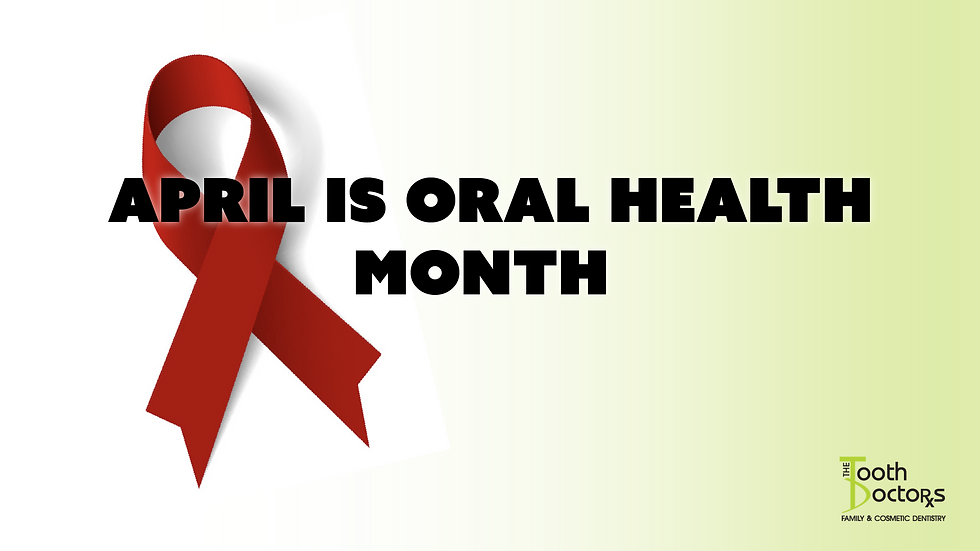Dental Injuries
- The Tooth Doctors

- Feb 8, 2013
- 3 min read
February 8, 2013 by Kasia
When a dental injury occurs, it is important to seek immediate dental treatment. The longer a serious dental injury is left untreated, the higher the risk of requiring root canal treatment or potentially losing the tooth. Dental injuries range from a chipped or fractured tooth to a displaced or avulsed tooth.

Chipped Tooth: This is the least severe dental injury and often times will affect the enamel of the tooth only. A patient with a chipped tooth may notice a sharp feeling to their tongue. Most times the rough edge of the chip can be smoothed out or a small filling can be placed. Usually this type of dental injury will not require further treatment, such as a root canal as it does not generally affect the pulp (nerve).
Fractured Tooth: There are many variations of a tooth fracture ranging from minor, involving the outer surface of the tooth only, to severe, involving the inner pulp (nerve) or root. Fractures can be vertical or horizontal, and a common symptom patients report is pain to bite. Pain to bite is due to the fractured section of the tooth separating slightly from the rest of the tooth as the pressure from biting is applied. Small fractures involving the outer surface of the tooth only should be treated urgently as they can very easily become severe fractures due to the force of biting. A fracture can be treated by removing the fracture from the tooth and placing a filling. If the fracture extends to the root of the tooth, it can cause the pulp (nerve) to die and inevitably a root canal would be required. The most serious tooth fracture would be a fracture of the root. In this instance an extraction of the tooth would be necessary.
Displaced Tooth: A displaced tooth means that the tooth can be moved around in the socket (pushed in/out or moved back and forth, but not removed). These cases are usually treated by placing a splint on the tooth to keep it in place thus giving it time to re-attach in the socket and heal. These injuries involve trauma to the pulp (nerve) and must be re-evaluated periodically to determine if a root canal will be required.
Avulsed Tooth: These injuries are the most severe and are similar to a displaced tooth except the tooth has come completely out of the socket. It is imperative to see a dentist within one hour of having a tooth knocked out. The reason for this is that the tooth has a greater chance of reattaching to the socket. While on the way to the dental office, keep the tooth moist by keeping it in milk or water, and handle the tooth by the crown, not the root. You may even place the tooth back in the socket to keep it moist. Treatment for an avulsed tooth is splinting the tooth to adjacent teeth to keep it stabilized. It will take a few weeks for the bone to heal around the tooth and once it has healed a root canal will be required.
Dental Injuries in Children: Children are typically prone to dental injuries, especially in their front teeth. If the injury is to a primary tooth, an x-ray will be required and in most cases the tooth will be monitored for pain, discoloration or abscesses. If any of these symptoms occur the tooth may require a pulpotomy (baby tooth root canal) or extraction . Sometimes the tooth may turn grey shortly after the injury but this does not necessarily mean the tooth requires further treatment. It can indicate a bruising effect from the trauma and may return to its natural color after a couple of months. If the injury is to a permanent tooth there will also be observation for any of these symptoms and if necessary treatment will be required.
At The Tooth Doctors we are more than happy to help with any questions you may have regarding dental injury, treatment or prevention. Dental injuries are most often accidental, however prevention such as wearing a mouthguard during sports is ideal. Dental Injuries




Comments